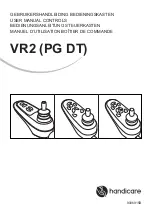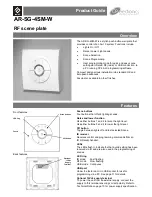
MSC C10M-BT / MSC C10M-BTC
User Manual
79 / 90
Technotes
EIST (Enhanced Intel
®
Speed Step)
This allows the processor to meet the instantaneous performance needs
of the operation being performed, while minimizing power draw and heat
dissipation. Processor clock will be at its minimum possible frequency
when in IDLE. When performing CPU loads, it will change its frequency
up to its maximum frequency. In summary, the OS controls the frequency
if EIST is enabled.
Note:
If EIST is disabled in setup, the CPU will run at its maximum speed.
Turbo Boost Technology won’t be available.
Turbo Boost Technology 2.0
Intel
®
Turbo Boost is a technology that enables the processor to run above
its base operating frequency via dynamic control of the CPU's "clock rate".
It is activated when the operating system requests the highest
performance state of the processor. The increased clock rate is limited by
the processor's power, current and thermal limits, as well as the number
of cores currently in use and the maximum frequency of the active cores.
For more information about Intel
®
Turbo Boost 2 Technology visit the
Intel
®
website.
Note:
Turbo Boost will only work if EIST is enabled.
Reference:
http://en.wikipedia.org/wiki/Intel_Turbo_Boost
ASPM (Active State Power Management)
Active State Power Management or ASPM is a power management
protocol used to manage PCI Express-based serial link devices as links
become less active over time.
As serial-based PCIe bus devices, such as IEEE1394 (FireWire), become
less active, it is possible for the computer's power management system to
take the opportunity to reduce overall power consumption by placing the
link PHY into a low-power mode and instructing other devices on the link
to follow suit.
Reference:
http://en.wikipedia.org/wiki/Active_State_Power_Management
TXT (Trusted Execution Technology)
Due to the complexity of this feature, please visit:
Note:
To use this feature VT, Vt-d, SMX and TPM must be enabled.












































